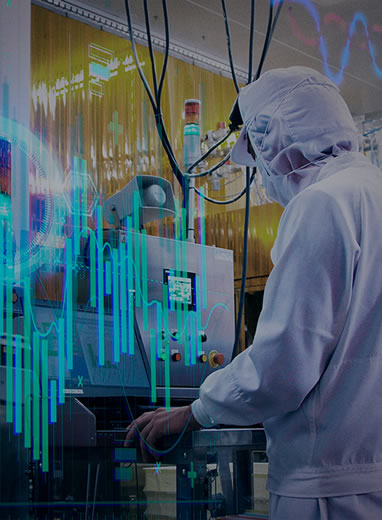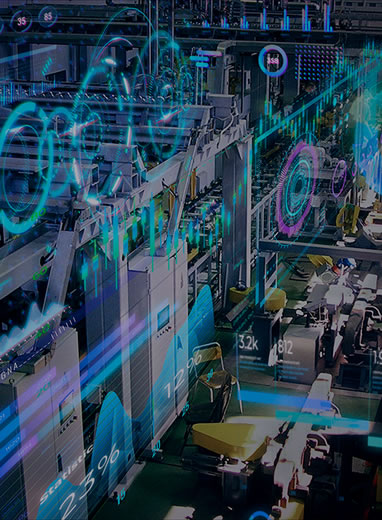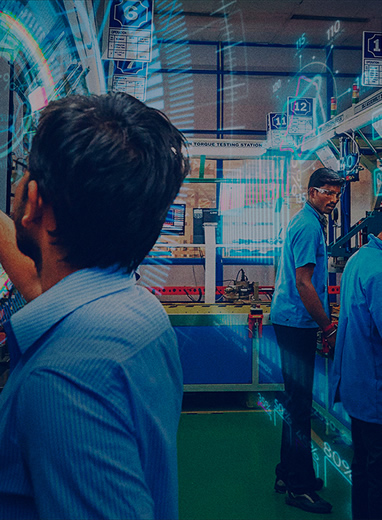Case study
Efficient
factory
management
through
visualization
of data

Lotte Co., Ltd. - Urawa factory
Food industry, Japan
 Background / Issues
Stagnation of operation efficiency due to
people-dependent processes
Background / Issues
Stagnation of operation efficiency due to
people-dependent processes
 Background / Issues
Background / Issues
Lotte’s Urawa factory is a confectionery specialist that
boasts one of the largest production volumes in Japan. It
manufactures chocolate, candies, frozen desserts, and ice
cream products.
In the food & beverage production industry, while
automation is advancing it is not universally applied. In
the case of Lotte, their problems were not clearly
understood, and rules for decision making were unclear. Many
processes continued to operate relying on the “experience”
of skilled engineers. As a result, future problems were
anticipated such as the retirement of skilled engineers and
future labor shortages, as well as the need for manpower and
time to deal with production line shutdowns and machine
troubles due to machine abnormalities. Therefore, the need
arose to implement a solution to allow central control on
all the processes related to production by taking advantage
of IoT (Internet of Things).
 Solution
Digitizing and analyzing the skills and knowledge of
skilled engineers
Solution
Digitizing and analyzing the skills and knowledge of
skilled engineers
 Solution
Solution
Lotte implemented the solution in the manufacturing
process of the complicated "Yukimi Daifuku” (a chilled
confectionery where vanilla ice-cream is wrapped around
thin rice cake dough), with the aim of then rolling it
out to the entire line. The solution enables real-time
diagnosis and offline analysis of data from the
production environment.
(STEP I) Furthermore, in order to effectively implement
utilize the solution, we added sensors that can measure
temperature, vibration, pressure, current, etc., and
collected data related to the finish of the rice cakes,
which used to rely on the “experience” of field experts.
(STEP II) From data analyses, we clarified the
correlation between the finish of the rice cakes and the
electric current power consumed in production, and
succeeded in formulating new diagnostic rules.
(STEP III) Currently, we are building and developing a
mechanism to collect, utilize, and control data for the
entire line, not just the rice cake manufacturing
process.
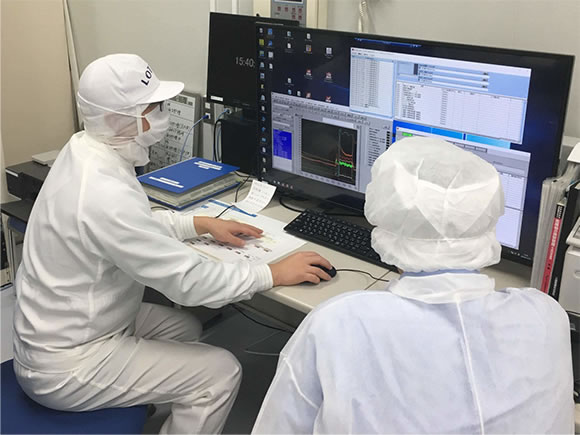
 Effect
Successfully made the entire line smarter
Effect
Successfully made the entire line smarter
 Effect
Effect
We gradually expanded the newly automated data collection and utilization process from a specific area to the entire line. By implementing smart manufacturing lines, we succeeded in initiating "preventive maintenance" (detecting signs of wear or trouble before it happens), "stabilization of quality" (increasing the volume of “right first time” products), and finally we realized improvement of productivity.
 SMKL
Date utilization for the entire line
SMKL
Date utilization for the entire line
 SMKL
SMKL
Level D
Optimize


Making ROI bigger step by step by using SMKL.






Level C
Analyze








Level B
Visualize








Level A
Collect








Level 1
Worker
Level 2
Workplace
Level 3
Factory
Level 4
Supply Chain

“Maturity Model” is a known type of analysis, it also makes the reader think of higher management analysis so is the right way to describe this….because it is actually a maturity model!

Just to make continuous investment is probably a bad business decision but to make that investment sustainable means that it pays for its self and continues to drive value – simply investing continuously does not guarantee benefit – only cost
Data analytics
-
STEP I C1 :Data visualization
(data collection and processing) -
STEP II C2 :Data analysis and utilization
(processing data in real-time) -
STEP III B3 :Application to the entire line
Starting with collecting data from limited areas of the process, we promoted real-time analysis and utilization of that data. We were then able to expand this from limited processes to the entire line.
 Customer's voice
Aiming for across-the-board deployment of smart
factories
Customer's voice
Aiming for across-the-board deployment of smart
factories
 Customer's voice
Customer's voice
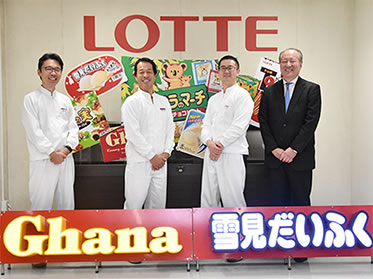
Members working to make Lotte’s Urawa factory smarter. From the left, Mr. Akimoto, Mr. Sugimoto and Mr. Bian of Lotte’s Urawa factory, and Mr. Tsuyoshi Matsunaga of Narasaki Sangyo, who supported the introduction.
The target at Lotte’s Urawa factory is "a
fully-automated factory." For that reason, it is
imperative to utilize solutions that can enable
"visualization" and expand the range of data
acquisition. We plan to reduce workload through
visualization, push for information sharing, and strive
to speed-up improvements.
In addition, the analysis system implemented in this
solution will be expanded to two factories in the Kyushu
and Shiga regions, which also produce Yukimi Daifuku.
Mr. Sugimoto, commenting on future efforts aiming for
fully autonomous operations, says, “In the future, we
wish to achieve fully autonomous operations in the
factory. We want to create a mechanism that can respond
autonomously before production halts or the quality
drops.”
Please inquire with the following for more detailed information about utilizing data to enhance productivity and factory operation ratios by breaking away from processes relying on people.
 Case Studies
We have a remarkable
track record
in a wide
range of industries
around the world.
Case Studies
We have a remarkable
track record
in a wide
range of industries
around the world.
 Case Studies
Case Studies
 SMKL
Smart Manufacturing Kaizen Level (SMKL)
SMKL
Smart Manufacturing Kaizen Level (SMKL)
 SMKL
SMKL


